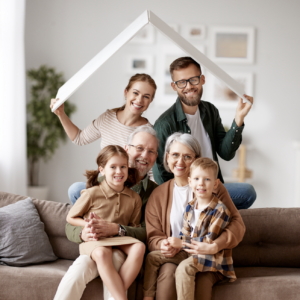Open House: Keep An Open Mind To Housing Alternatives As You Age

Open House: Keep An Open Mind To Housing Alternatives As You Age
November 8, 2023
Figuring out where to live- and how to live- as the years creep up is one of the essential dilemmas you’ll face as you get older. Not everyone has a choice in the matter, and indeed homelessness is becoming an ever bigger problem among older adults. But for those who have planned ahead, and have the financial and social supports in place, there are a range of options to consider, depending on your physical health, financial budget, and priorities for what makes life worth living. Of course, even when planning ahead you can still hit some bumps along the way. You may have to be patient and await your turn on a waiting list (for example, see the planning and patience discussed by agebuzz blogger Kathleen Rehl as she plans to live in a Continuing Care Retirement Community) or you may have to settle disagreements between you and your partner as to competing visions of retirement living. For a concise review of seven of the many housing options that may be available to you, pull out your map and click here.
In recent times it appears that two trends in housing for older adults are gaining more prominence: Multigenerational living and intergenerational living. Both of these concepts allow for people from different generations to cohabitate in the same place, a trend that allows each generation to learn from the other and that is likely to soften or lessen the sting of ageism. Multigenerational housing usually refers to extended family (grandparents, parents, children, etc) living together in one setting, often becoming a somewhat cohesive unit that combines activities in the home, such as meals. Intergenerational housing is usually a group of unrelated, differently-aged people living together in a building or community, perhaps with shared tasks, meals, or activities. It’s useful to consider both of these arrangements as they gain popularity among older adults.
Multigenerational living has sped up dramatically, gaining more than a million households within the past decade. These sorts of household arrangements are more popular in the South, Puerto Rico, and some Western states. Clearly, more costly housing and increased caregiving needs drive this trend, but there’s also data to show that these sorts of arrangements can foster improved health and happiness. As The Institute For Family Studies found, “The benefits (of multigenerational living) appear to be strongest when older people are living with family, and not just their children but also their grandchildren. It stands to reason that occupying the social role of a grandparent gives older people meaning and purpose.” Of course, making the arrangement work within the confines of a single space requires some level of flexibility, creativity, and planning for privacy for each resident, and for anticipating changing needs as the family members get older. AARP recently suggested several different ways to make such arrangements work, either in existing spaces or by developing new additions.
Intergenerational living, which we’ve previously addressed, can mean anything from a retirement community inviting in younger residents to an older adult taking in a younger housemate to help with chores and develop into a companion. Of course, sharing a home or living space doesn’t always mean mixing generations. More and more, for reasons having to do with money and the desire for social connections, older adults are also opening their homes to arrangements of congregate living: sharing homes with like-minded, similarly situated peers. According to The Street, nearly one million Americans have decided to live in this “Golden Girls” arrangement, a number that rose a dramatic 88% from 2006-2016. For both the host and renter, it can be a rewarding arrangement, as long as each party is vetted, in agreement, and shares a similar outlook as to what they hope for in the arrangement. There are always risks that the situation won’t work out, which makes it all the more important to choose a housemate with careful consideration, put in place a written agreement, and include a 30-day opt-out clause for each partner. However, in some circumstances, the concept of shared living among like-minded older adults can not only work out but even be a life-altering and life-improving arrangement. For a peek at how uplifting such a co-housing community can be, take a look at this happy home shared by 26 older women in England!







